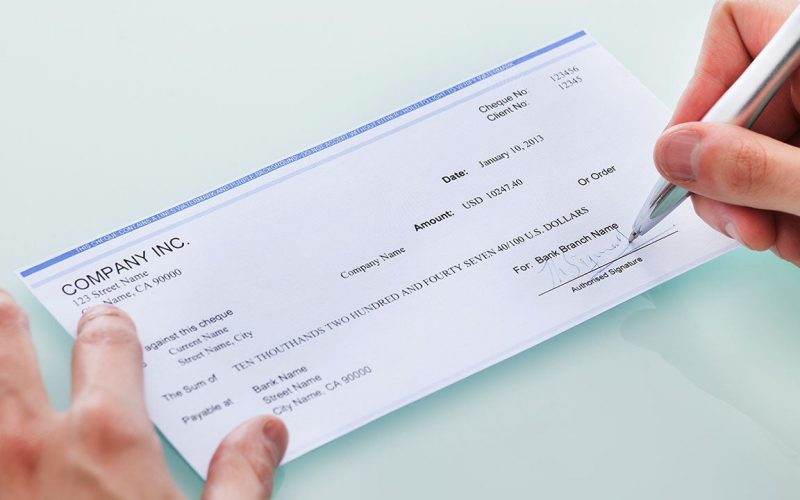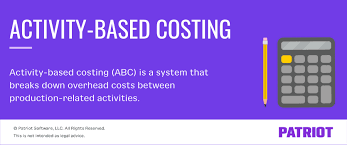Check fraud may involve using a second bank or a third party, usually a retail location, to postpone the lack of money in a transactional account on the day the check is set to clear at the bank. It’s also been utilized by people who have some real money in interest-bearing accounts but artificially inflate their balances to get their banks to pay them more interest. Criminals have used the check float to transit fake checks through solicited users of online auctions. That’s why in this article we will be discussing Check kiting cases and examples.
What is Check Kiting?
Kiting is typically defined as purposely writing a check for a value greater than the account balance from one bank, then writing a check from another bank, likewise with insufficient money, with the second check covering the non-existent funds from the first account.
Check kiting, also known as cheque kiting, is a type of check fraud that involves taking advantage of the float to spend funds that do not exist in a checking or other bank account. Checks are thus exploited as a kind of unlawful credit rather than being used as a negotiable instrument. The goal of check kiting is to artificially inflate the balance of a checking account in order to allow written checks that would otherwise bounce to clear. If the account is not intended to be replenished, the fraud is known informally as paper hanging.
Some entities engage in check kiting in order to get a short-term loan. Others intend to scam the bank on purpose. Simple check-kiting methods use a single bank check, but more advanced schemes use checks from many financial institutions.
Is Kiting a Check Illegal?
The act of moving a bad check from one bank account to another is called “kiting” or “check-kiting.” People who have more than one bank account take advantage of this because it takes several days to process a check. The check that was deposited adds to the amount of money that can be used. Thus, kiting is against the law.
Check Kiting Examples
Check to kite is a practice used by businesses and individuals who seek to acquire access to funds that they do not have. Assume that a company has checking accounts with two separate banks. It needs to pay its employees, but it is $10,000 short. The company drafts a $10,000 check from account X and deposits it in account B. The cash is available to the company the following working day, thanks to Regulation CC standards. The check takes two to three days to clear account X. On the second day, the company makes a deposit, narrowly avoiding the bank returning the check. Even though the funds were eventually transferred into account X, this is still one of the examples of illegal check kiting.
Here’s a more ominous example of check kiting. A person develops a long-term relationship with a bank. He then writes and deposits a $5,000 check from bank A and a $5,000 check from bank B into account C. Neither bank A nor bank B has sufficient funds to cover the checks. The individual withdraws all of the money as soon as the funds are available at bank C. When the banks return the bad checks, bank C is left with a $10,000 shortfall.
Is Check Kiting Still Possible?
Criminal penalties for check kiting in the United States can include up to 30 years in jail and large fines. Regardless of whether or not charges are filed, the bank may still shut the account and submit the event to ChexSystems (equivalent to a credit bureau), making it difficult to obtain a new business account in the future.
Do Banks Prosecute Check Kiting?
In the U.S., check kiting is illegal under Title 18, U.S. Code Section 1344, which says it is illegal to get money from a federal bank by lying. A check kite is a way to get a bank to give you a loan with no interest without the bank knowing about it.
How Do Banks Prevent Check Kiting?
The best way to prevent or put an end to kiting is to have vigilant tellers who are always on the lookout, as well as a computer that keeps track of all things submitted for payment and indicates whether or not they are pulled against collected cash.
Check Kiting Cases
Cases involving check kiting or paper hanging are, without a doubt, a crime. It is a method of writing or cashing checks for insufficient amounts by taking advantage of the customary three-day period required by a bank to clear a check. It is possible to earn interest on amounts that do not exist if done methodically, over time, and repeatedly. Check kiting is a type of federal bank fraud or, on a state level, a type of check fraud, Penal Code 476a, and it can be a wobbler.
Someone opens two checking accounts in a conventional check kiting method. Our client would put funds, possibly $1,500, in the first account. The client would write a $5,000 check from the first account for the second account. Because banks normally require three business days (“float”) to clear a check, our customer would issue a $5,000 check and deposit money back into the first account. Both checks would theoretically clear when they should both bounce.
In some ways, it’s a way to get finance for something you can’t afford or to earn a few days’ interests when the checks are in the seven digits. It may go unnoticed for a long time if done slowly and intentionally on a circular basis, sometimes involving more than one bank or even more than one individual making deposits.
Understanding Check Kiting Cases
This is a crime punishable by federal bank fraud legislation, such as 18 U.S.C. 1344. As well as state crimes, such as California Penal Code 476a (“Passing Bad Checks”).
The prosecution must prove beyond a reasonable doubt that the defendant intended to defraud a financial institution (by showing one institution that he had a large balance in another bank) or obtain money or other items under the custody of a federal financial institution by false pretenses under federal law. Individuals frequently make honest mistakes, so proving this can be difficult. But when a series of transactions are carried out in a similar manner, the totality of the facts shows purposeful activity.
Federal bank fraud carries a maximum sentence of thirty years in prison, fines of up to $1 million, and repayment to the financial institution for all funds received fraudulently.
How Do Thieves Wash a Check?
By altering the names of the payees and, frequently, the amounts, check washers are able to deposit bogus checks. A small percentage of the time, these cheques are taken from mailboxes and processed with chemicals to erase the ink. Scammers may even use photocopiers or scanners to make counterfeit versions of checks.
How Long Can I Float a Check?
The typical float time was between two and four days prior to the passage of the Check Clearing for the 21st Century Act (Check 21)1. These days, it’s common for a check to clear the bank the same day it’s written.
My bank Closed My account for Check kiting
In the United States, banks must abide by a complex set of federal laws. Banks are required by federal banking legislation to preserve the security of their customers. Banks are required to assist in criminal investigations. They must follow court directions when it comes to debt collection. Banks can also hold liable if one of their accounts is exploited for illegal purposes. If bank officers fail to disclose suspicious conduct or halt it when they can, they may be fined or imprisoned. Banks will close accounts that are suspected of being involved in criminal activity, even if there is no proof.
Consequently, you may be able to resolve this problem with a phone call if it was an honest mistake. In most cases, you may need to submit paperwork or hire a lawyer. Unfortunately, there are some freezes or closures over which you may have no control.
Tips for avoiding check-kiting fraud
To prevent becoming a victim of check fraud, you should take the following precautions:
- Never send money by wire to a stranger.
- Find out how to identify fraudulent checks and check scams.
- Whenever you engage in financial transactions, be aware of your counterparts.
- Resist any pressure to “act now” because a hurry is a bad sign.
- Remember that your intuition is usually correct if a deal or offer appears too good to be true.
Banks themselves also keep an eye out for a few distinct warning signs when it comes to check-kiting. These consist of a bank account with numerous cheques being placed and withdrawn from the same account on a daily basis. Large sums of money in an account that has not yet been cleared by the paying bank and deposits made through various bank branches are two further signs of possible check-kiting.
Frequently Asked Questions
What is check kiting and why is it illegal?
The practice of check kiting is a type of check fraud. It makes use of a float (the time it takes for a check to clear) to use money that isn’t in a checking account. Kiting effectively converts faulty checks into illegal credit, which is bad news for banks.
How does a check kiting scheme work?
Check-kiting is an illegal act of writing a check from a bank account with insufficient funds and depositing it into another account. Then, before the original check clears, you take the funds from the second account.
Do banks usually prosecute check kiting?
Check kites are punished in the United States under Title 18, U.S. Code Section 1344, which defines receiving monies from a federal bank under false pretenses. A check kite, in essence, obtains an interest-free loan from a bank without the bank’s knowledge.






